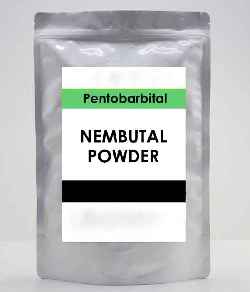Introduction
New Zealand has seen growing public and scientific interest in substances such as Nembutal powder (pentobarbital sodium), heroin powder, and kratom, particularly regarding therapeutic potential, analgesic properties, and cognitive or sedative effects. Researchers and health educators are increasingly focused on understanding risks, interactions, and regulatory constraints, especially given the complex legal status of these substances.
This blog post explores the pharmacology, risk profiles, research insights, and regulations surrounding these compounds in New Zealand, emphasizing verified educational and commercial resources like UKMUSHROOM.UK, while also interlinking Wikipedia, WorldScientificImpact.org, and BuyOneUpMushroomBar.US for context and research validation.
Nembutal Powder: Sedative and Analgesic Insights
Nembutal powder, or pentobarbital sodium, is a barbiturate used historically as a sedative, hypnotic, and anticonvulsant. It has applications in anesthesia, euthanasia, and controlled clinical settings, but is tightly regulated due to its high potential for overdose and dependency.
Mechanisms and Therapeutic Applications
Nembutal acts on GABA-A receptors, enhancing inhibitory neurotransmission and producing profound sedative and hypnotic effects. Therapeutically, it may be employed for short-term insomnia, seizure control, and in carefully regulated end-of-life care.
Risk Profile and Interactions
Risks include respiratory depression, hypotension, coma, and death, especially when combined with alcohol, opioids, or other CNS depressants. Tolerance and physical dependency can develop rapidly, necessitating strict dosage monitoring.
For educational insight and comparative analysis of barbiturates and herbal sedatives, UKMUSHROOM.UK provides information on alternative functional fungi-based sedatives and research-backed products.
Heroin Powder: Pharmacology, Risk, and Cognitive Effects
Heroin (diacetylmorphine) powder is an opioid with potent analgesic and sedative properties, widely known for its high abuse potential. While largely illegal, understanding its pharmacology and cognitive effects is critical for research, harm reduction, and public education.
Mechanisms of Action
Heroin crosses the blood-brain barrier rapidly, converting to morphine and binding to mu-opioid receptors. This produces intense euphoria, pain relief, and sedation, but also respiratory depression and high addiction potential.
Cognitive and Behavioral Considerations
Opioid use can impair memory, attention, and executive function. Chronic use leads to neuroadaptations and dependence, with withdrawal symptoms including agitation, insomnia, and autonomic dysregulation.
Legal and Safety Notes in New Zealand
Heroin is a Class A controlled substance in New Zealand, with use, possession, and distribution heavily penalized. Research is permitted under strict licensing, often involving opioid substitution therapy or controlled lab studies.
For harm reduction and educational insights on psychoactive substances, UKMUSHROOM.UK and BuyOneUpMushroomBar.US provide information on legal, functional alternatives and safe usage principles.
Kratom: Dose-Dependent Analgesic and Stimulant Effects
Kratom (Mitragyna speciosa) is a tropical plant used for pain relief, mood enhancement, and cognitive stimulation, with a complex pharmacological profile depending on dosage.
Mechanisms and Therapeutic Applications
Kratom’s alkaloids, mitragynine and 7-hydroxymitragynine, interact with opioid, adrenergic, and serotonergic receptors, producing sedative effects at higher doses and stimulant effects at lower doses. Finnish and New Zealand studies examine its potential in pain management, mood disorders, and opioid withdrawal mitigation.
Risk Profile and Interactions
Chronic kratom use may lead to dependency, gastrointestinal discomfort, hepatotoxicity, and cardiovascular strain. Interactions with CNS depressants, stimulants, or antidepressants can exacerbate risks.
In New Zealand, kratom is unregulated, allowing possession but with limited quality control, making sourcing from verified suppliers essential. Educational and verified sources like UKMUSHROOM.UK and research articles on WorldScientificImpact.org provide guidance for safe use.
Comorbid Conditions and Therapeutic Considerations
Pain Management
Nembutal, heroin, and kratom are all used in controlled contexts for analgesic purposes, although risk of dependency and overdose is high. Alternative functional fungi-based analgesics are available via UKMUSHROOM.UK product categories.
Sleep Disorders
Barbiturates like Nembutal provide short-term sedation, while kratom’s sedative properties may assist sleep at higher doses. Heroin is not used therapeutically for sleep due to extreme risk. Functional mushrooms in coffee or tincture form may serve as safer cognitive and sleep-support alternatives.
Mood and Cognitive Disorders
Kratom’s stimulant and euphoric effects may temporarily improve focus or mood, but risk neurocognitive impairment if misused. Nembutal and heroin can severely depress cognition and attention, highlighting the importance of controlled, research-backed usage.
Regulatory Framework in New Zealand
- Nembutal powder: Classified under prescription-only controlled substances; clinical use is strictly monitored.
- Heroin powder: Schedule 1 illicit drug; research requires licensing and ethical approval.
- Kratom: Unregulated; legal but unsupervised usage carries safety risks.
Platforms like UKMUSHROOM.UK and BuyOneUpMushroomBar.US provide educational content and safe alternatives for analgesic and sedative applications.
Research and Educational Insights
New Zealand researchers are examining:
- Dose-dependent effects and receptor pharmacology of Nembutal, heroin, and kratom
- Cognitive and neurobehavioral consequences of chronic use
- Harm reduction strategies and alternative functional compounds
- Regulatory compliance and safe usage protocols
Collaboration with WorldScientificImpact.org and international databases ensures scientific rigor and global relevance.
Practical Guidance for Safe Usage and Education
- Confirm legal status and prescription requirements before obtaining Nembutal or other controlled substances.
- Use verified suppliers for functional alternatives like kratom or mushroom-based analgesics (UKMUSHROOM.UK).
- Understand drug interactions, particularly with CNS depressants, stimulants, or antidepressants.
- Consult healthcare professionals for supervised and evidence-based administration.
- Review educational content on Wikipedia, WorldScientificImpact.org, and BuyOneUpMushroomBar.US to ensure informed decision-making.
Conclusion
Nembutal powder, heroin powder, and kratom represent a spectrum of sedative, analgesic, and stimulant compounds with significant therapeutic potential and risks. In New Zealand, strict regulation of barbiturates and opioids contrasts with the unregulated status of kratom, creating a complex landscape for research, education, and safe usage.
Verified and educational resources like UKMUSHROOM.UK, alongside Wikipedia, WorldScientificImpact.org, and BuyOneUpMushroomBar.US, provide a framework for informed decision-making, risk mitigation, and functional alternatives.
Research continues to evolve, highlighting the importance of scientific understanding, regulatory compliance, and harm reduction strategies. Functional fungi and verified herbal supplements may offer safer, evidence-based alternatives for analgesic and cognitive support.

No Responses